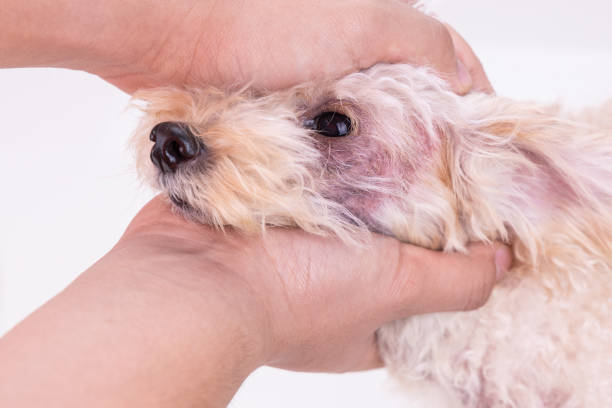Your dog’s vomit can offer important clues about their health and potential things they might have ingested.
The colour of their vomit can provide a clue to what they might have eaten and if there is a serious condition going on. Knowing the difference between the colours could save a life! Here are some of them:


Green Vomit
This usually means that your pet has eaten grass or something with high levels of chlorophyll, such as kale, cabbage, spinach, wheatgrass etc. It may also indicate an obstruction in your pet’s intestinal tract, preventing food from moving through properly. These obstructions include swallowed items (such as socks) and tumours or cancerous growths within the intestines.
Yellow or Orange Vomit
It could mean that your pet has digested something high in fat, such as butter or chicken/beef fat; it can also indicate infection (hepatitis) and pancreatitis.
Red Vomit
This type of vomit is often caused by ingestion of rat poison, laundry detergent (especially pods), antifreeze or anything that contains iodine.
Black Vomit
This can be caused by introducing an object into your pet’s gastrointestinal system, indicating digested blood. It could also mean that your dog ate charcoal (which is used to treat poisonings).
White Vomit
Your dog’s diet often causes this colour. It can also indicate that they vomited foam or froth from their stomach, which means they’re vomiting bile.
Yellowish White Vomit
This could mean that there are traces of digested fat in the vomit. It can also indicate a pancreatic issue.


When Should I be Worried About My Dog Vomiting?
Whenever you notice your dog vomiting, there could be something seriously wrong. The colour of their vomit can provide a clue to what they might have eaten and if there is a serious condition going on. Knowing the difference between the colours could save a life!
If your pet vomits red or reddish-brown (with or without food), that could indicate blood in their stomach. Bleeding in the stomach can be caused by ulcers, enlarged liver or spleen, cancer, haemophilia, clotting disorders, pancreatitis, obstruction (e.g., foreign body or intestinal blockage) or poisoning (e.g., lead).
If your pet vomits white or yellow-ish foam, that could indicate fat in their stomach. Pancreatitis can cause fatty, greasy or even foamy vomit. Viral hepatitis (and possibly other liver diseases) can also result in this type of vomit with white foam. The foam may contain digested food particles, bile and gas.
If your pet vomits enormous amounts of foam, that could indicate a severe condition: Cushing’s disease (hyperadrenocorticism), diabetes, gastric or intestinal foreign bodies, bloat or tick paralysis. Your pet may also vomit foam if they are taking some seizure medication.
If your pet vomits off-white (cream) to a grey coloured substance, that could indicate stones or crystals in their stomach. Certain toxins like aspirin, grapes and raisins can also cause vomiting of this type. So does certain infectious diseases like leptospirosis and staphylococcus infections.
If your pet vomits yellow or golden-brown, that could indicate bile in their stomach. Bile is a fluid produced by the liver that helps digest food, but if your pet overeats fat, it can cause vomiting of this colour.
If your pet vomits green, that could indicate they have eaten something poisonous. Common sources of poisoning may include grass, houseplant leaves or certain chemicals.


If your pet vomits bubbly foam that contains undigested parts of their meal, that could indicate bloat or another condition in which they swallow too much air when eating or drinking. It can also be caused by the stomach being full of air and fluid, such as when animals drink too much water too quickly.
If your pet vomits transparent or white-ish foam, that can indicate they have an overly active stomach (gastroparesis) and may happen if there is not enough acid in the stomach to help digest food. The extra air and fluid can also cause this type of vomitus.
If your pet vomits brown or rust, that can indicate bile pigments in their stomach (e.g., bleeding in the upper intestinal tract). Bile pigments can also cause dark vomit (chocolate-coloured) if they remain undigested or when a dog cannot digest food properly (e.g., liver disease).
If your pet vomits brown or green and bubbly, that can indicate poisoning by certain chemicals (e.g., fertilizers), household products (e.g., paint), and some human medicines (taken by accident).
Conclusion
A dog vomiting foam is not always a reason for concern, but if they start vomiting more frequently than usual or the colour of their vomit changes, they may need to be checked by a veterinarian. If you notice your pet vomits red or reddish-brown (with or without food), that could indicate blood in their stomach.
Bleeding in the stomach can be caused by various problems like ulcers, enlarged liver or spleen, cancer, haemophilia, clotting disorders, pancreatitis and other conditions. White/yellow-ish foam indicates fat in their stomach which can come from diseases like pancreas disease and viral hepatitis (among others). Vomiting large amounts of the off white foamy substance can also mean stones and crystals in their stomach.


